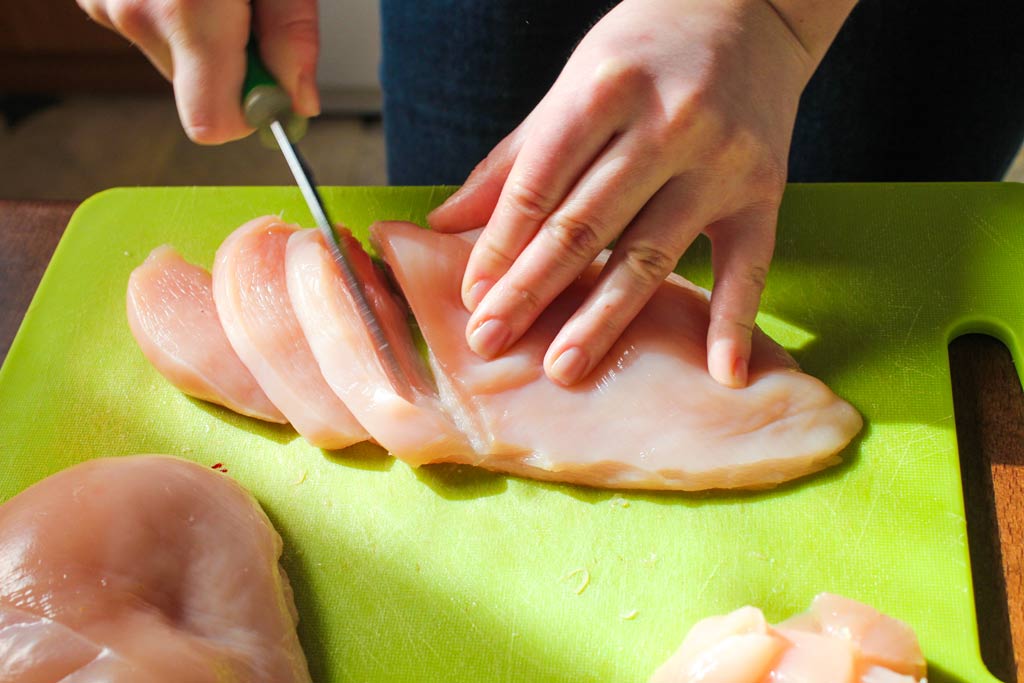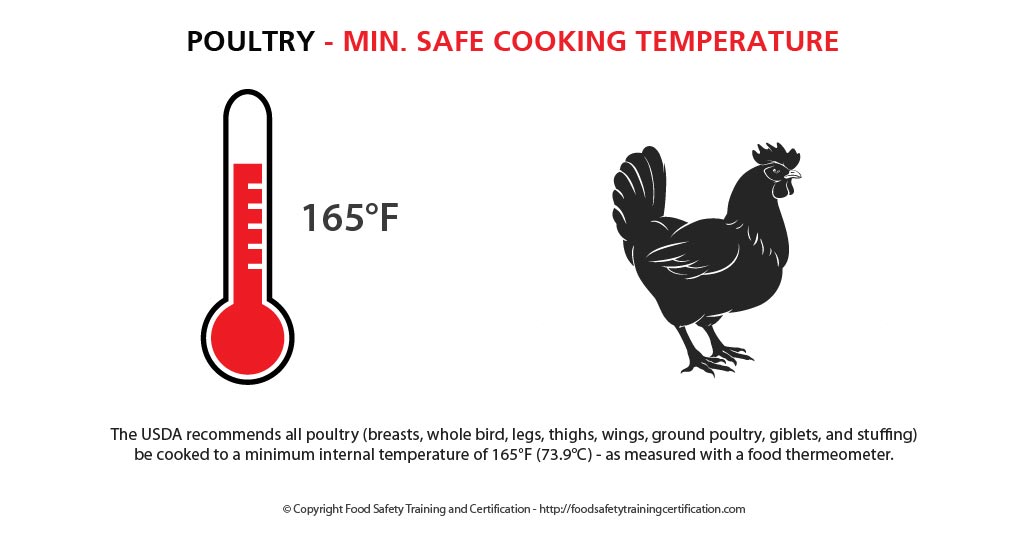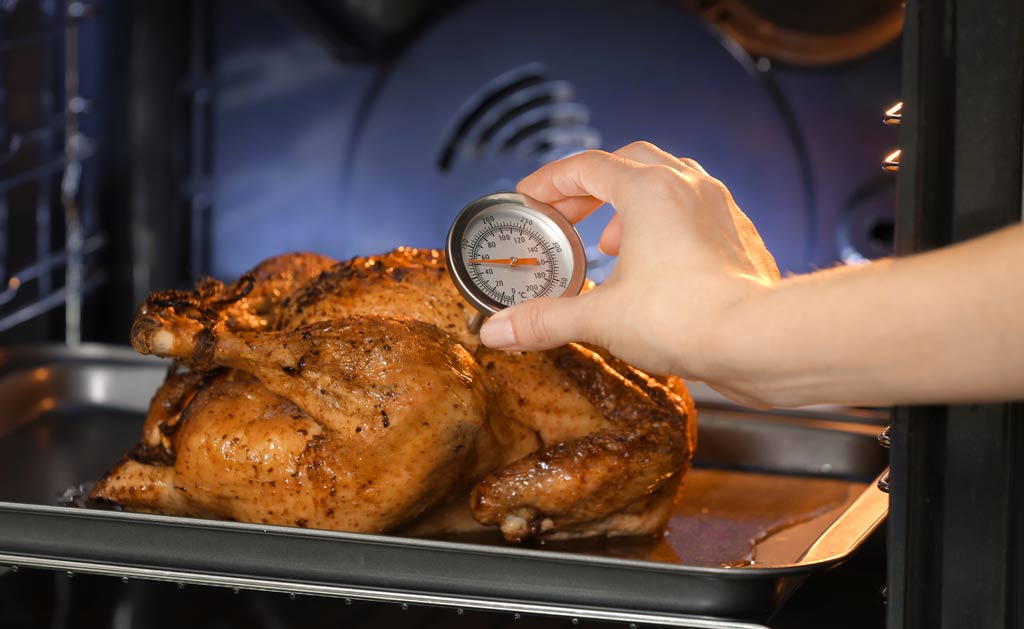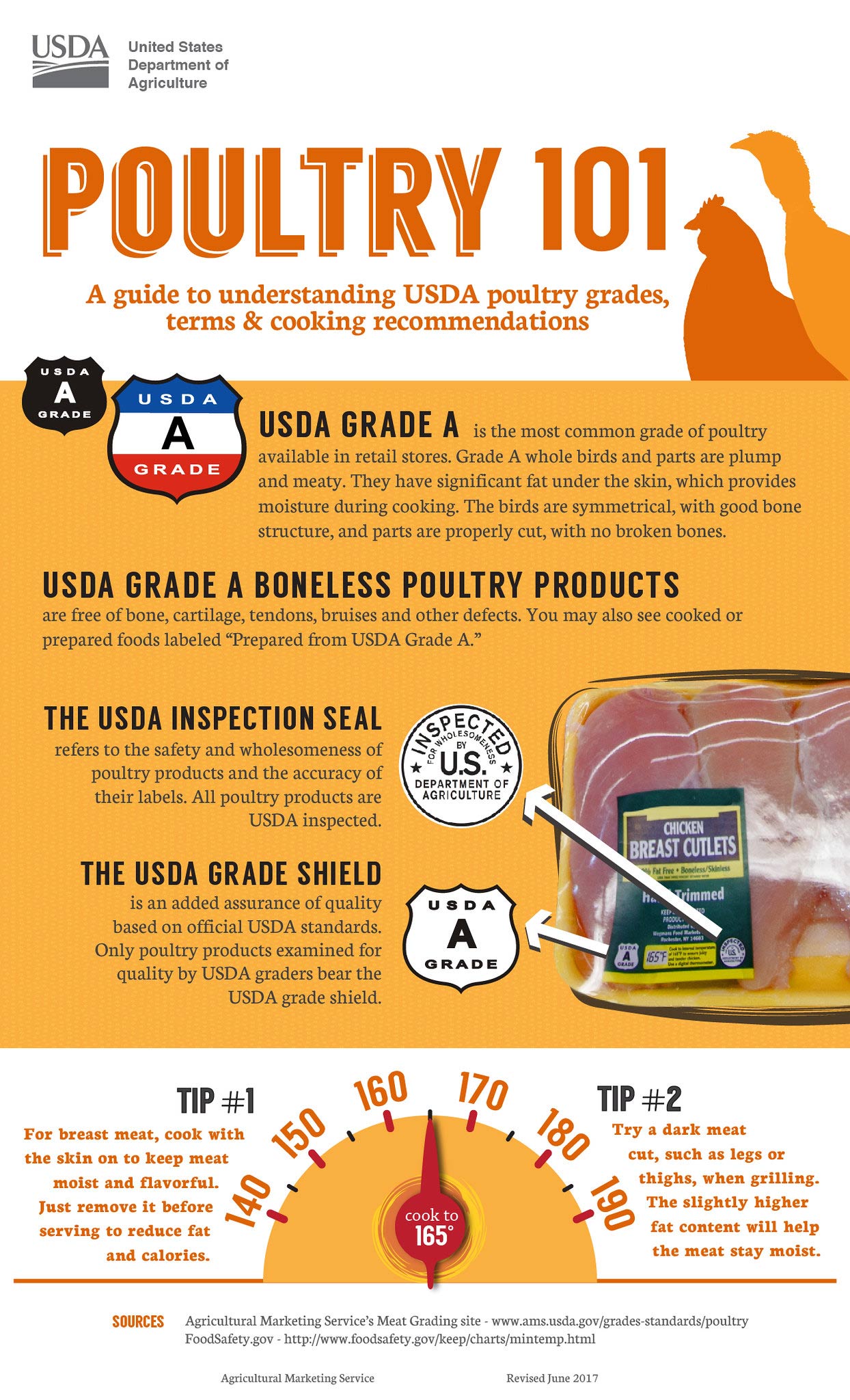Chicken may be a nutritious protein source, but it also causes the most cases of foodborne illness, according to the Centers for Disease Control and Prevention (CDC).
Raw chicken and poultry may contain harmful bacteria – such as salmonella, listeria, and campylobacter – and washing it does not remove the bacteria.
This bacteria can also be spread to other items and food – if proper procedures are not followed. The only way to kill bacteria on chicken is by cooking it to a safe internal temperature – as measured by a food thermometer.
That’s why it’s important to follow proper preparation and cooking procedures to ensure food safety when it comes to chicken and poultry.

Washing Chicken Can Spread Harmful Bacteria
According to the USDA, washing poultry or chicken before cooking is not recommended. When you wash uncooked chicken, you can easily spread salmonella or other bacteria from poultry juices can be spread to other foods, utensils, and surfaces.
- Learn about cross contamination, cold and hot food safety, best practices for personal hygiene, and foodborne illnesses.
- Food Manager ANSI Certification: SALE $99.00 - Valid in all States
- Food Handler ANSI Training for only $7.00!
- 10% OFF SALE: Enter Promo "TRAIN10OFF" at Checkout
This is called cross-contamination. It also makes it more likely someone in your family will touch the contaminated items or surfaces and get sick.
Washing Chicken Spreads Germs
Credit: Centers for Disease Control and Prevention
To prevent cross-contamination, build habits such as frequently washing hands, utensils, cutting boards, and work surfaces. For instance, if you prep a raw chicken on a cutting board, don’t use the same cutting board later to slice tomatoes for the salad. At least not without washing it first. And the same goes for your knife.

Cooking Chicken to the Proper Temperature
Raw chicken is not safe to eat and will lead to food illness or poisoning. The best way to make sure that your chicken does not contain harmful bacteria is to cook it properly.
According to the USDA, all poultry (breasts, whole bird, legs, thighs, and wings, ground poultry, and stuffing) should always be cooked thoroughly to 165˚F.

Use a food thermometer to make sure chicken is cooked to a safe internal temperature of 165°F. Also, cut into the thickest part of the meat and ensure that it is steaming hot with no pink meat and that the juices run clear.

Food Illness Symptoms
The symptoms of salmonella food poisoning often come on quickly, usually within 8 to 72 hours after consuming contaminated chicken or poultry.

Symptoms may be aggressive and can last for up to 48 hours. Typical symptoms during this acute stage include:
- abdominal pain, cramping, or tenderness
- chills
- diarrhea
- fever
- muscle pain
- nausea
- vomiting
- signs of dehydration (such as decreased or dark-colored urine, dry mouth, and low energy)
- bloody stool
In some cases, foodborne illness can lead to serious conditions. Call or see the doctor if you or someone in your care has the following signs of food poisoning:
- High fever (temperature more than 101.5°F)
- Diarrhea for more than 3 days that is not improving
- Bloody stools
- Prolonged vomiting that prevents you from keeping liquids down
- Signs of dehydration, such as:
- Making very little urine
- Dry mouth and throat
- Dizziness when standing up
Summary
Raw chicken and poultry may contain harmful bacteria and washing it does not remove the bacteria. This bacteria can also be spread to other items and food – if proper procedures are not followed. The only way to kill bacteria on chicken is by cooking it to a safe internal temperature – as measured by a food thermometer.

Infographic: USDA – Poultry 101



























